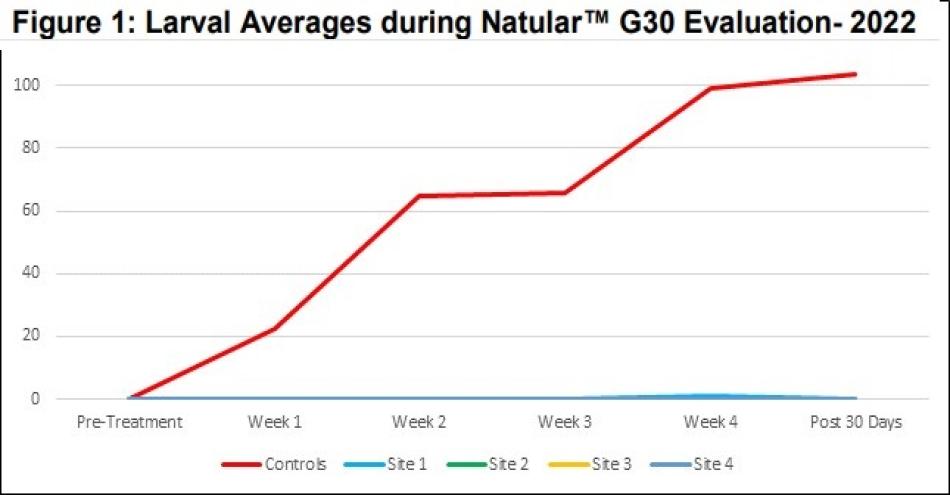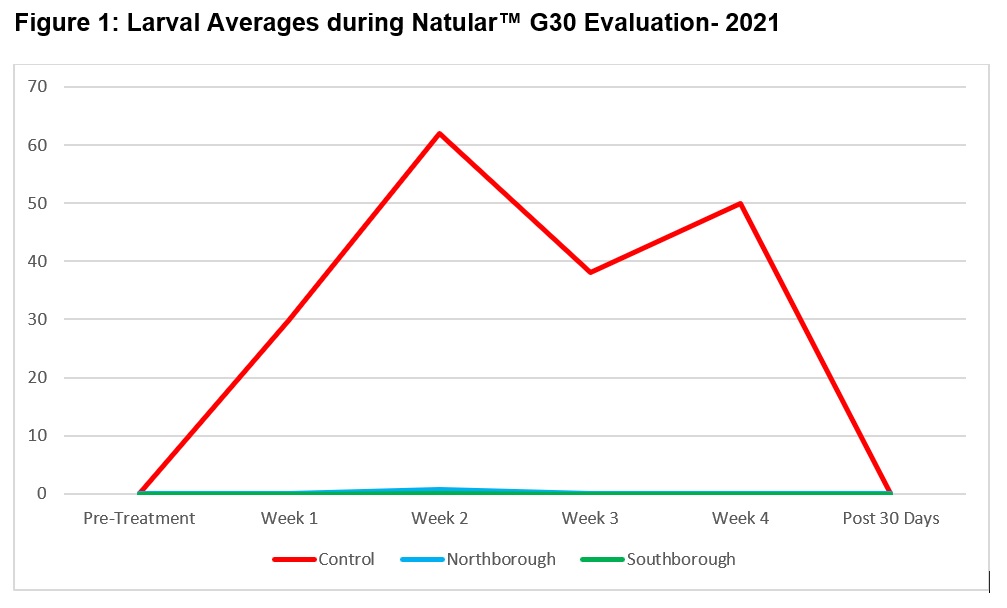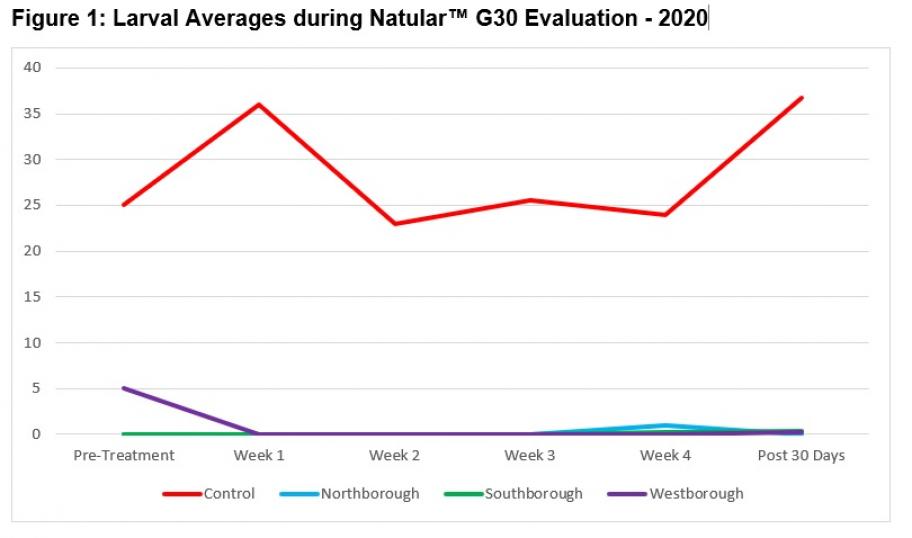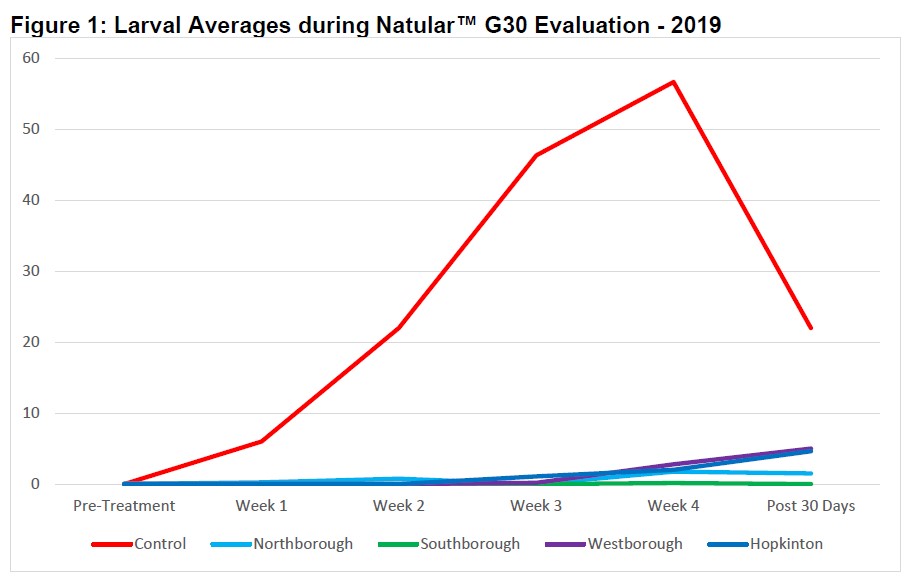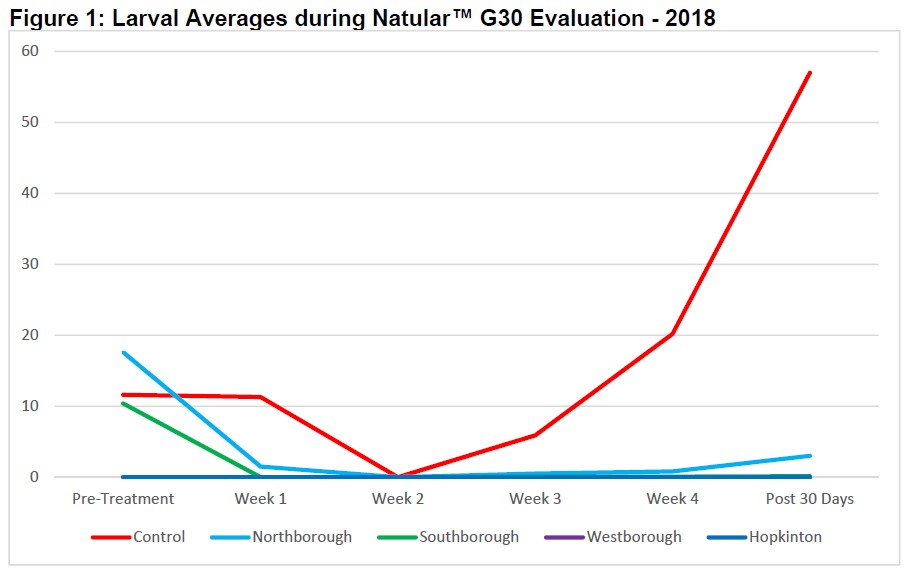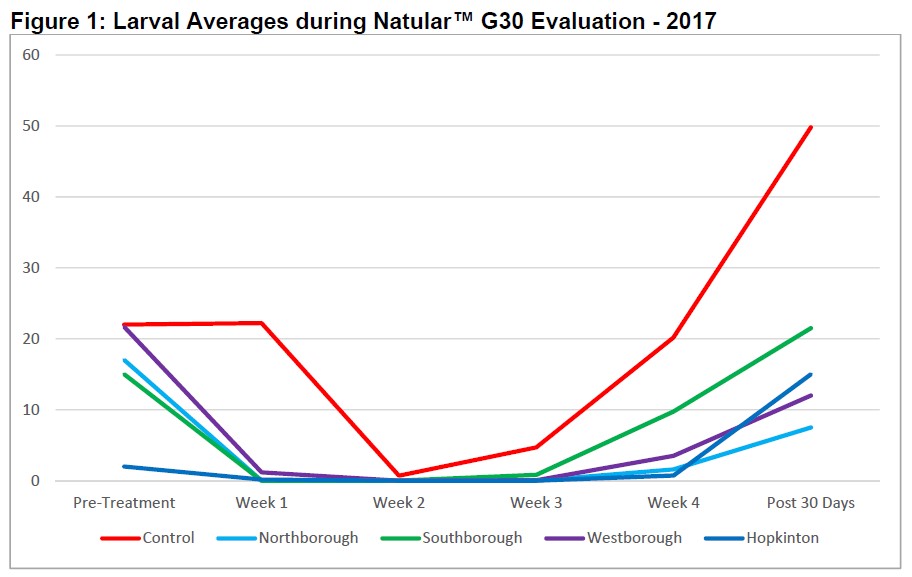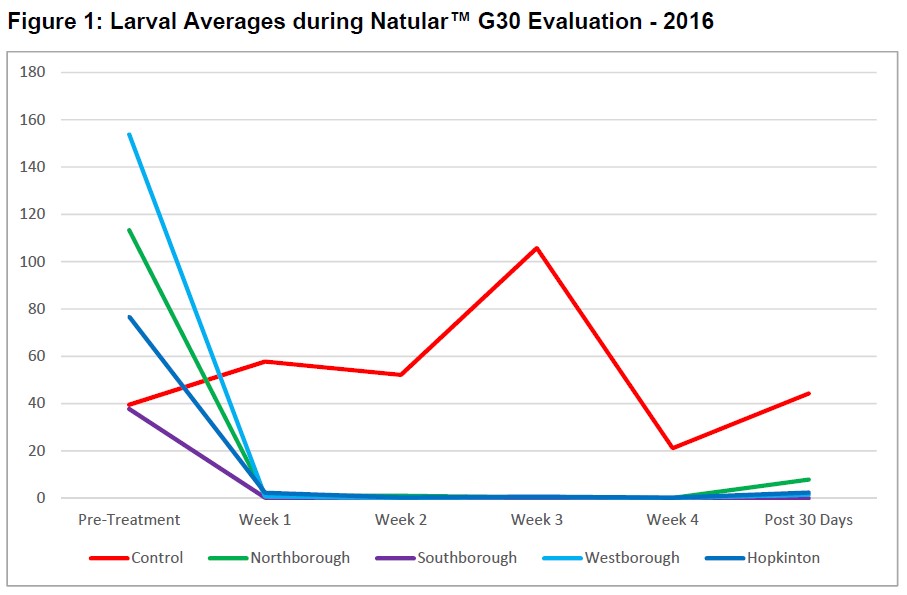Field Trials of Natular G30 for Pre-hatch Control

Ochlerotatus abserratus and Ochlerotatus excrucians represent two of the first mosquito species to emerge each season. These species are both persistent mammal biters and may harbor Jamestown Canyon virus Andreadis 2005[1]. Oc. abserratus and Oc. excrucians are univoltine species, they produce a single generation each year. The eggs produced by adult females during the season remain inactive until the following spring, requiring a freeze-thaw cycle know and "cold-conditioning". Although a potential vector of Jamestown Canyon virus, Oc. abserratus and Oc. excrucians are not considered important factors in the transmission cycle of West Nile virus and Eastern Equine Encephalitis.
With the goal of reducing early season mammal biting mosquito species, CMMCP has evaluated the Natular™ G30 formulation of spinosad for several years. Created from fermented Saccharopolyspora spinosa, spinosad is a viable alternative to Bacillus thuringiensis israelensis and other traditionally used products. The Natular™ G30 formulation of spinosad is a slow release formulation, allowing it to be utilized as a pre-hatch treatment. After six years of successful field trials, this program went fully operational in 2021. Early pre-hatch field trials focused on sustained release Bti formulations, but these products did not show good control in late winter mostly due to cold water temperatures and the slow feeding process of the mosquito larvae during this timeframe. As the water temps rose during late spring and summer, these Bti products did show good control.
